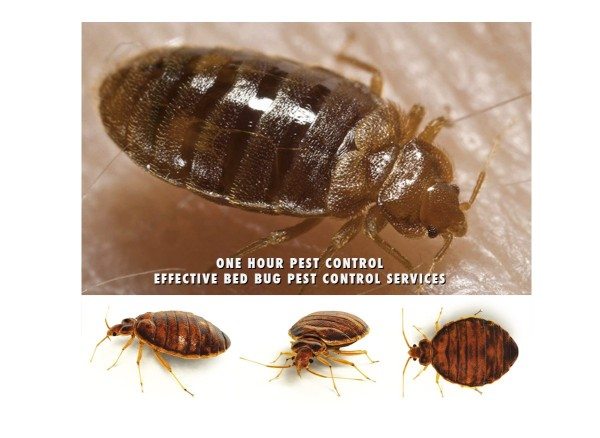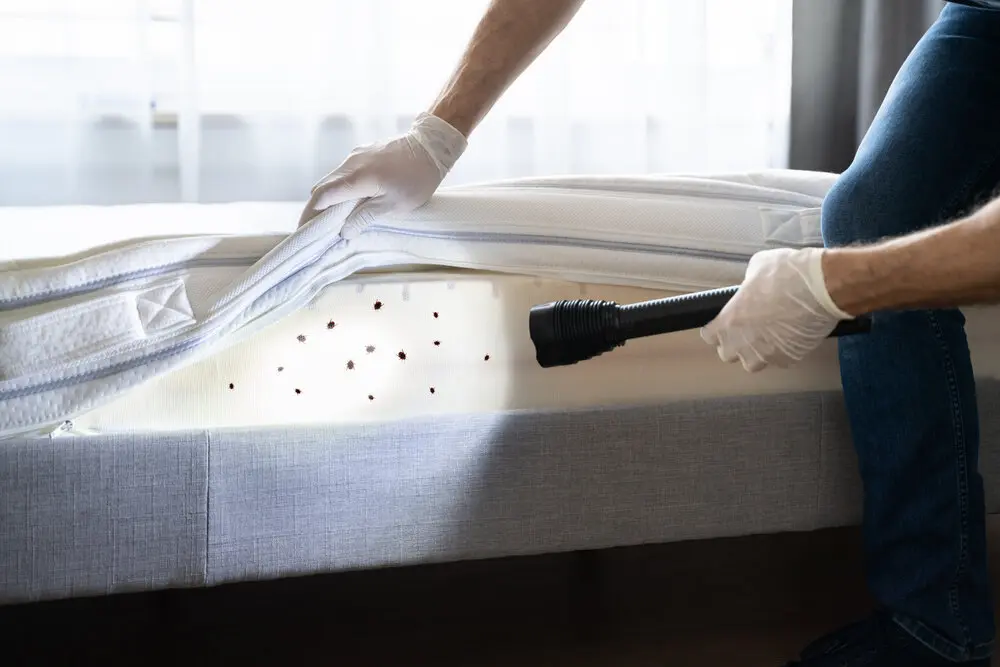How to Recognize Bed Bug Bites and Treat Them Quickly
How to Recognize Bed Bug Bites and Treat Them Quickly
Blog Article
Get Informed Concerning the Kinds Of Pest Control Methods and Their Benefits for Home Owners
Understanding the numerous pest control methods available to property owners is important for reliable bug management. Property owners that are well-informed can make strategic choices that not only address insect issues however likewise boost the general top quality of their living atmosphere.
Chemical Parasite Control Techniques
Chemical parasite control approaches are an essential part of integrated insect management strategies for property owners looking for efficient remedies to pest infestations. These techniques include the application of chemical substances developed to eliminate or prevent pests that intimidate individual residential or commercial property, wellness, and comfort. Typical chemicals utilized include pesticides, herbicides, rodenticides, and fungicides, each tailored to target specific pests.
The main benefit of chemical bug control is its quick performance; numerous formulations provide instant outcomes, lowering pest populations substantially quickly. Additionally, advances in chemical formulas have actually led to products that are much more eco-friendly and have lower toxicity degrees for non-target microorganisms when applied appropriately.

Organic Insect Control Methods
Natural pest control approaches have actually gained prestige as home owners look for safer and more lasting alternatives to standard chemical strategies. Organic parasite control strategies use natural killers, bloodsuckers, or pathogens to handle pest populaces properly. This approach is not just eco pleasant but also reduces the danger of injury to non-target species, consisting of valuable pests and wild animals.
One of the most typical biological control methods involves presenting all-natural predators into the environment. For instance, ladybugs can be used to control aphid populations, while nematodes target soil-dwelling pests like grubs. In addition, parasitoids-- organisms that survive on or within a host-- can be used to control particular pest varieties by laying eggs inside them, eventually resulting in their demise.
Another technique is using biopesticides, which are originated from all-natural materials such as microorganisms, plants, or minerals (bed bug exterminator). These items can properly target parasites while posing very little danger to pet dogs and people. Overall, biological pest control techniques offer property owners with an effective methods of pest administration that lines up with environmental principles, advertising a healthier living atmosphere while minimizing reliance on artificial chemicals
Mechanical Bug Control Techniques
Mechanical insect control techniques incorporate a selection of methods that physically protect against or get rid of parasites without making use of chemicals. These techniques are particularly useful for house owners seeking eco-friendly choices while making certain the safety and security of their living areas.
One usual approach is the usage of obstacles, such as displays, nets, and traps, which stop pests from going into homes or details areas. For example, mounting window screens can effectively keep bugs out, while making use of physical obstacles around gardens can discourage bigger pests like rabbits or deer. Furthermore, mechanical catches made for rats can capture and Full Report remove these insects without the requirement for toxic compounds.
One more efficient method entails using mops and vacuum cleaners to get rid of insects straight from surfaces. Routine cleaning and maintenance can substantially minimize bug populaces by removing food resources and concealing places. Employing devices like ultrasonic pest repellents can deter numerous parasites with noise waves that are unpleasant to them but faint to humans.
Social Bug Control Practices
Cultural bug control techniques concentrate on customizing the atmosphere and management methods to produce conditions that are much less favorable to pest invasions. These practices are basic in preserving a well balanced ecosystem and reducing the dependence on chemical interventions. By altering farming practices, homeowners can properly discourage pests while advertising plant health.
One common strategy consists of crop turning, which disrupts the life process of pests by altering the kinds of plants expanded in a specific area (bed bug exterminator). This not only minimizes pest populaces but additionally boosts soil health. Additionally, intercropping-- growing diverse crops in proximity-- can confuse pests and minimize their capability to locate their recommended host plants
Water administration is an additional vital facet of social methods. Proper watering strategies can stop standing water, which acts as a breeding place for mosquitoes and various other insects. Maintaining tidiness in and around the home, such as routinely removing particles and food waste, can dramatically reduce parasite tourist attraction.
Incorporating these social practices into a comprehensive bug management approach enables house owners to develop an environment that naturally prevents insects, consequently improving the effectiveness of other control methods while promoting sustainable horticulture and landscape design.

Integrated Parasite Monitoring Approaches
Integrated Parasite Monitoring (IPM) represents an all natural strategy that incorporates different approaches to successfully manage bug populations while lessening environmental impact. This approach integrates biological, social, physical, and chemical practices to accomplish lasting pest control. By examining pest populaces and their natural opponents, IPM highlights surveillance and recognizing bugs prior to applying control measures.
Among the core principles of IPM is making use of limits, which develop the degree of parasite activity that calls for treatment. This ensures that therapies are used only when required, lowering the reliance on chemical pesticides. Biological control methods, such as introducing all-natural killers or parasites, job in conjunction with social techniques like plant turning and habitat adjustment to disrupt pest life process.
Additionally, IPM encourages making use of least-toxic chemical options when treatment is pest control number essential, prioritizing products that present marginal risk to non-target organisms and the atmosphere. For home owners, embracing IPM comes close to not only improves the efficiency of insect administration but also promotes a much healthier Your Domain Name living atmosphere, fostering biodiversity and decreasing chemical exposure. Eventually, IPM equips home owners to make enlightened decisions that stabilize pest control with eco-friendly obligation.
Verdict
In conclusion, recognizing the different pest control methods encourages home owners to make informed choices regarding pest monitoring. Each strategy-- chemical, organic, mechanical, social, and incorporated pest management-- offers unique benefits that provide to various needs and preferences.
Understanding the different parasite control approaches available to home owners is important for efficient parasite administration.Chemical insect control methods are a vital component of incorporated pest monitoring methods for property owners looking for reliable options to pest infestations. Overall, biological pest control techniques provide home owners with an effective methods of bug management that aligns with environmental concepts, advertising a healthier living setting while minimizing dependence on synthetic chemicals.
Social insect control practices concentrate on modifying the environment and management strategies to create problems that are less conducive to pest problems.In conclusion, recognizing the numerous pest control methods equips homeowners to make educated decisions relating to pest administration.
Report this page